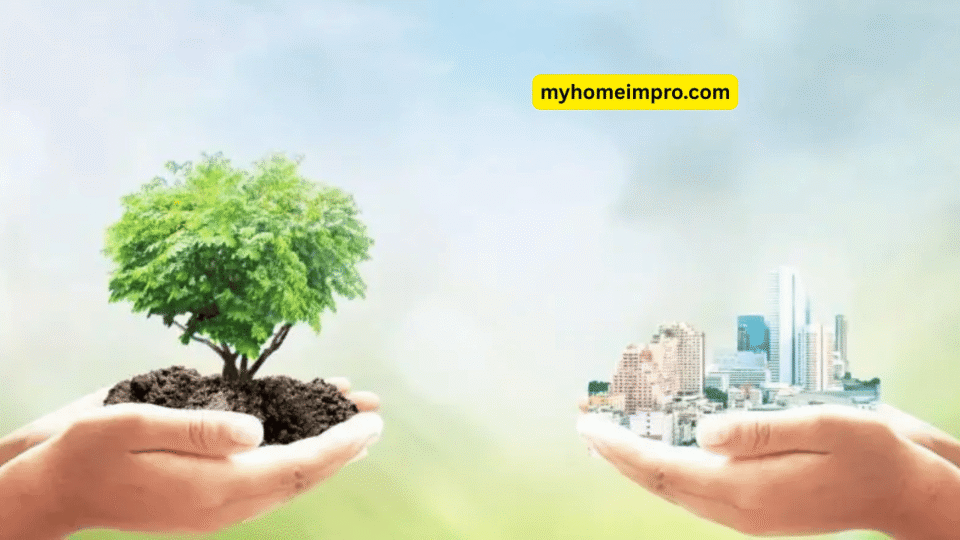The construction sector is changing fast as the need for eco-friendly construction methods keeps on increasing. Climate change, urbanization, and tighter environmental controls are determining the future and have turned sustainable construction into a necessity, not just a trend. Developers, architects, and contractors in 2025 are anticipated to adopt innovative techniques that minimize environmental footprint while enhancing efficiency and long-term value.
Designing for Sustainability
Table of Contents
Sustainable building starts with intelligent design. Building design in 2025 relies intensely on energy efficiency, natural illumination, air flow, and space utilization. Sustainable design encompasses an orientation of structures to maximize sunlight, minimizing the use of artificial light and heat. It further entails designing buildings for flexibility to allow them to be reused or modified instead of being torn down in the future.
Building Information Modeling (BIM) is an essential tool used to simulate energy consumption, material usage, and lifecycle performance prior to laying the first brick. Digital planning minimizes waste and enhances accuracy.
Adopting Eco-Friendly and Recycled Materials
Selecting the proper materials is an important component of any sustainable building project. Recycled steel, reclaimed wood, bamboo, and low-carbon concrete are all common in 2025. They minimize environmental degradation, lower carbon emissions, and prevent depletion of resources.
Manufacturers currently produce certified sustainable products, accredited by those monitoring environmental effects from a product’s life cycle. Locally used materials also benefit the local economy and lower transportation-related emissions.
Enhancing Energy Efficiency In-Situ
Construction sites more and more have energy-efficient equipment and machinery. Electric and hybrid construction vehicles, solar-powered equipment, and intelligent site management software decrease the use of fossil fuels.
Integrating alternative energy sources into the construction site itself—like solar panels or portable wind turbines—has proven to be a viable alternative to power tools and temporary structures throughout the building phase.
Water Conservation and Management
Water shortage is a key issue in most regions around the world. Green building in 2025 features water-conserving devices such as greywater recycling, low-flow showerheads and toilets, and rainwater collection systems.
Construction trends today also involve dust suppression systems that make very little use of water and environmentally friendly options for replacing conventional water-dependent concrete curing practices.
Cutting Construction Waste
One of the most important sustainable construction best practices in 2025 is reducing waste during construction. Sophisticated waste management technologies sort recyclable materials on-site. Prefabricated and modular construction methods have also gained popularity, making it possible to assemble components off-site under controlled conditions with low material loss.
Computerized inventory devices measure material use with accuracy to prevent over-ordering or under-use. All these measures not only benefit the environment but also save money heavily.
Resources such as Linkhouse give professionals working in sustainability access to the newest case studies, tools, and subject matter expertise, enabling construction teams to implement effective green building practices suitable for various regions and project sizes.
Smart Technologies and Automation
Smart buildings today are engineered with automation systems that maximize energy consumption in real time. Sensors dim lights, heat, cool, and ventilate based on the occupancy level and surrounding conditions. In 2025, such systems are no longer niceties—they are an integral part of sustainable building.
Smart building also encompasses automated equipment such as robotic masons, 3D printing, and drones for inspection, all designed to increase efficiency and decrease human error and wastage of materials.
Engaging the Community and Stakeholders
Transparency and community engagement are integral to sustainable building. Informing local communities ensures projects achieve environmental standards and preserve local ecosystems. Keeping stakeholders informed, reporting on sustainability, and transparency establish trust, which culminates in improved outcomes for all.
Final Thoughts
Embracing the best practices of 2025 sustainable construction benefits not just the planet but is also necessary for long-term business success. From environmentally friendly design and energy-efficient gear to digital technology and people engagement, every choice matters. As the world evolves, businesses that lead with sustainability will be ahead of the curve while building a cleaner, smarter world for future generations.

